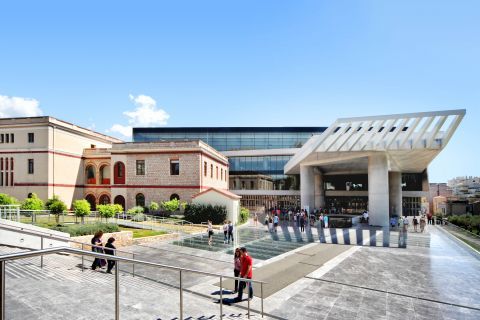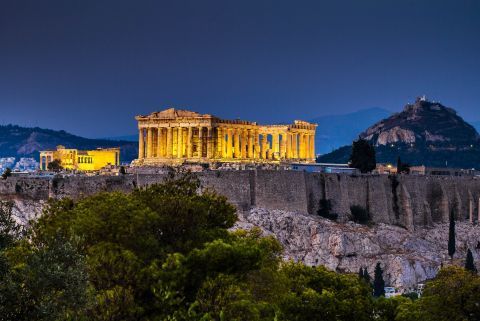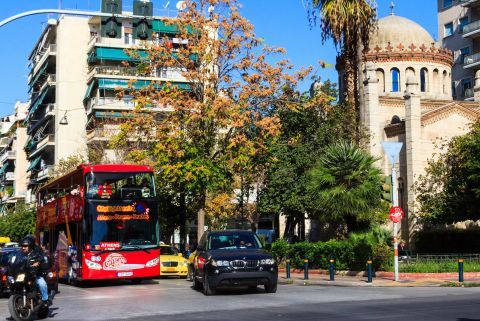Full-day Athens tour with Cape Sounion
General Description
Join this guided tour to experience each corner of Athens and find out what makes it so otherworldly!
Your first stop will be a brief one at the world-famous Panathenaic Stadium (also known as the Kallimarmaro), the place where the first modern Olympic Games took place back in 1896! Then, hop on the bus and pass by the Temple of Olympian Zeus, the Hadrian’s Arch, the Greek Parliament (with the Tomb of the Unknown Soldier in front of it) and the National Garden, the Academy of Athens, the University of Athens, the historic National Library, and Syntagma Square.
Afterward, you will head to the Acropolis. By visiting the Sacred Rock, you will encounter all of its monuments, such as the Propylaea, the Temple of Athena Nike, the Erechtheion, and the crown jewel of Athens, the Parthenon! Shortly after the end of the Acropolis tour, you will admire ancient wonders of the classical era inside the New Acropolis Museum!
After having lunch in a local restaurant, continue your guided trip by moving along the Athenian Riviera and admire the high-class residential areas and beaches of Glyfada, Vouliagmeni, and Varkiza as you head to the last stop of your tour, the stunning Cape Sounion! Being a fantastic destination due to the views it offers, Sounio also hosts the Temple of Poseidon, one of the three temples of Ancient Greece’s Sacred Triangle and the legendary spot of the myth of Aegeus, king of Athens! After visiting it, you will have time to wander on the rocky promontory of Sounio and enjoy the setting.
_-1280.jpg)
_-1280.jpg)

_-480.jpg)




